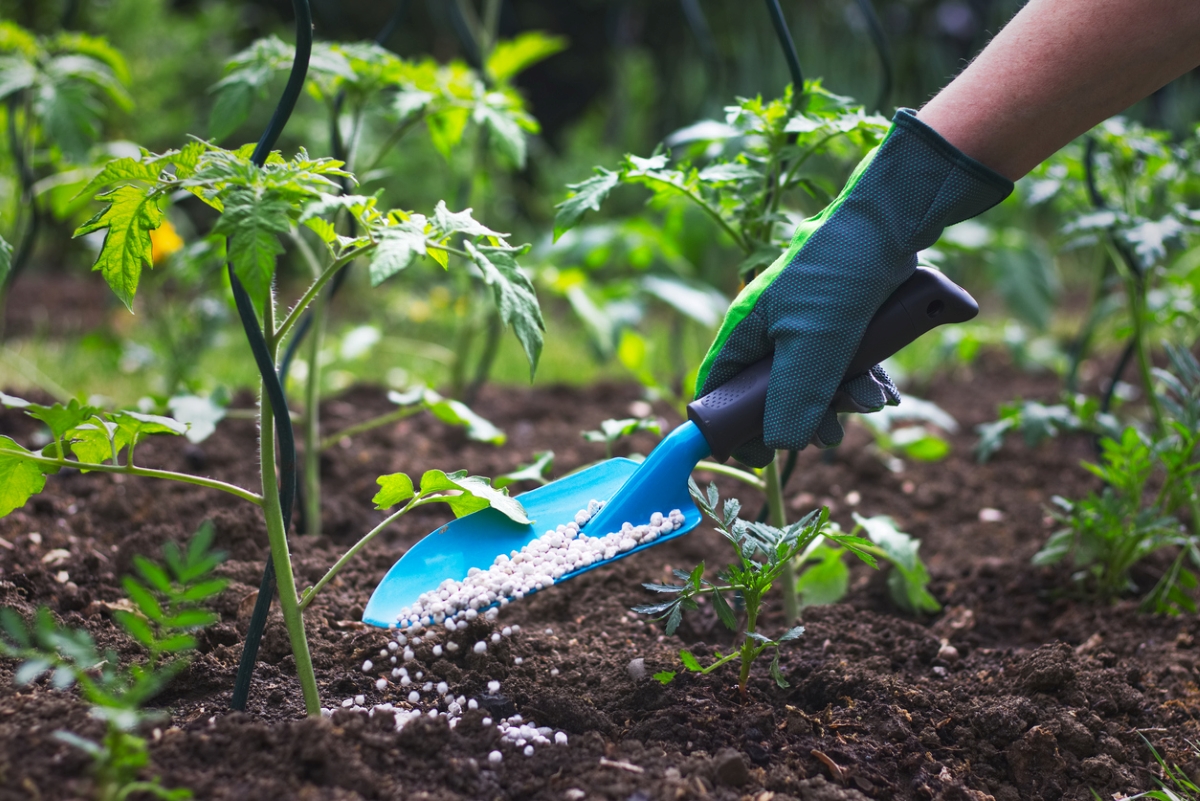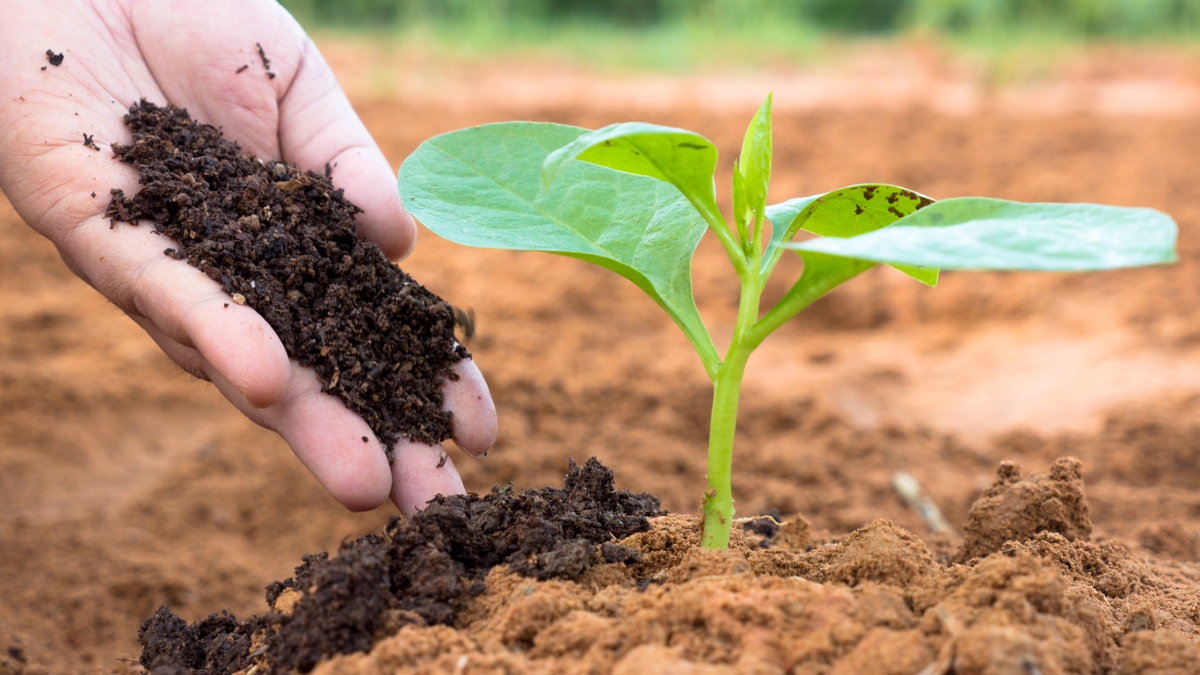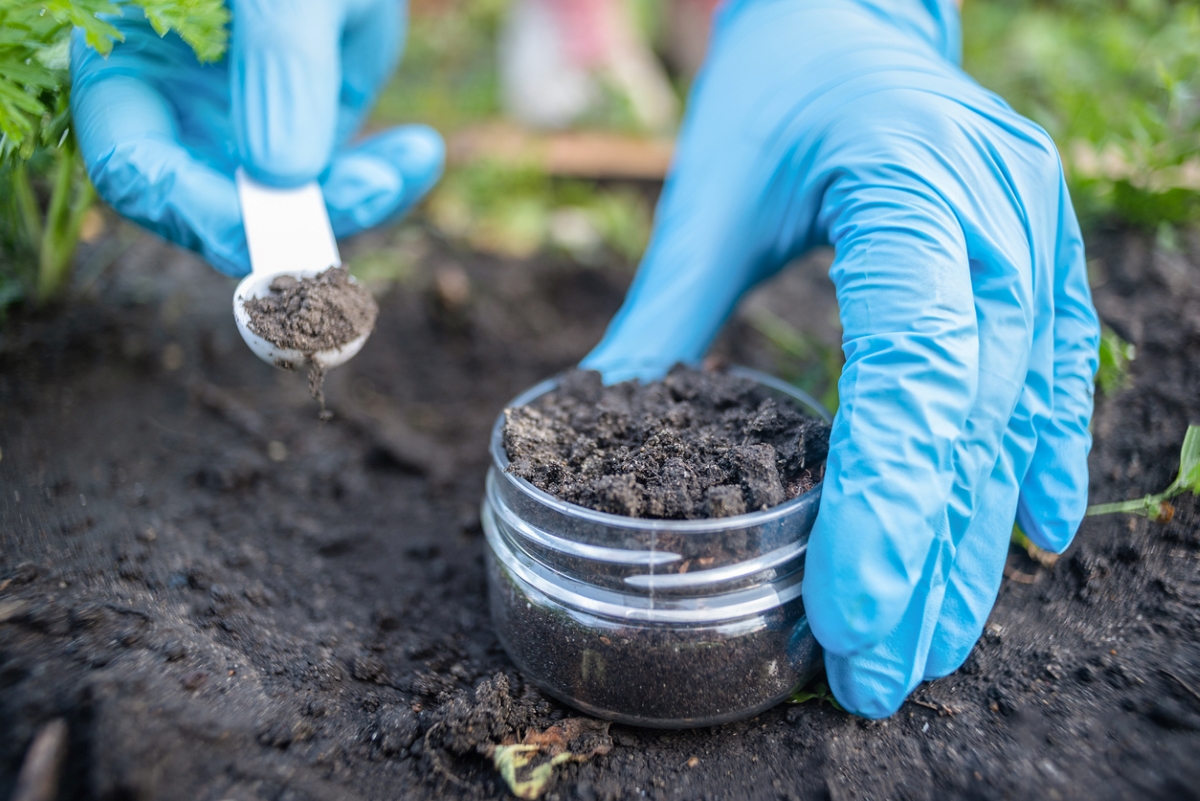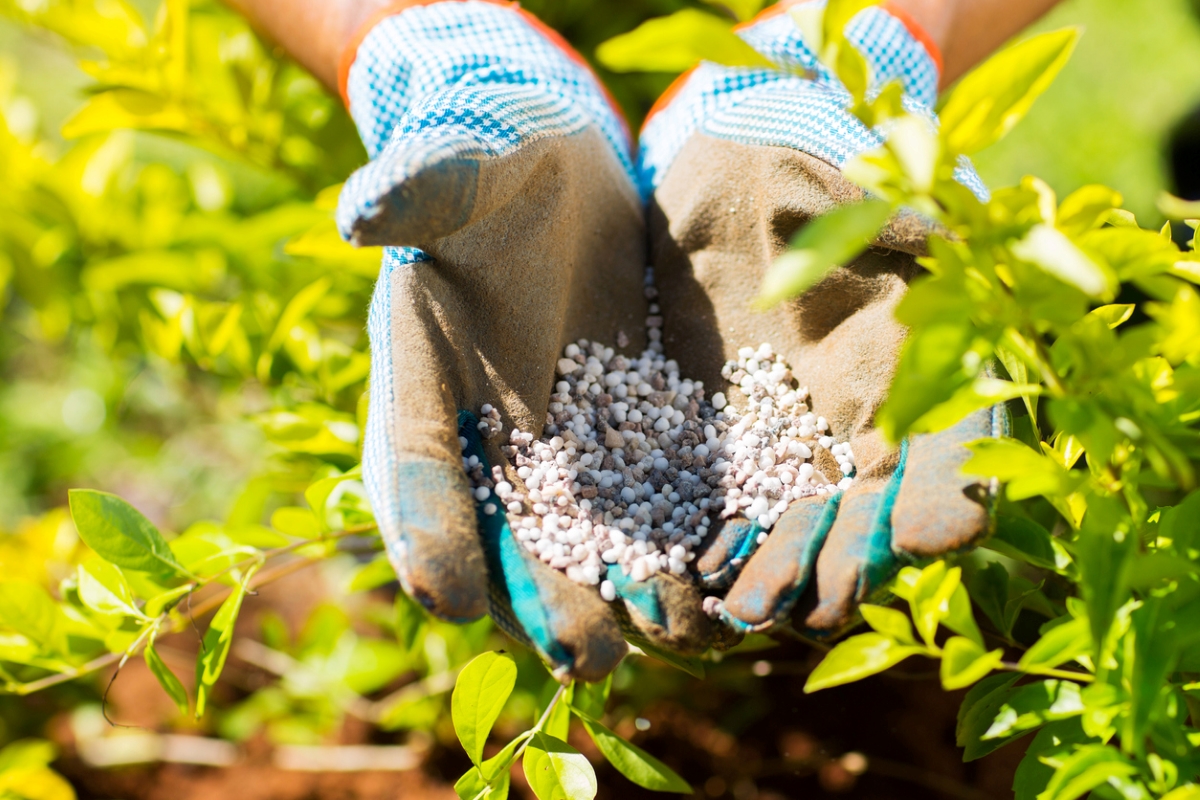We may earn revenue from the products available on this page and participate in affiliate programs. Learn More ›
Is plant food the same as fertilizer? In short, no. While both contribute to a plant’s overall health and growth, there are differences that set them apart. Unfortunately, the terms often are used interchangeably, which leads to confusion about plant food vs. fertilizer.
First off, what is plant food? It’s made by plants, using elements derived from air, water, sunlight, and nutrients in the soil. Fertilizer is also food for plants, but it’s derived from a mixture of natural or synthetic nutrients added to soil or water (or sometimes applied to foliage) to supplement a plant’s health and growth.
Before moving on to finer differences between fertilizer and plant food, there’s also the matter of liquid fertilizer vs. plant food to clear up. Liquid fertilizer is sometimes labeled as indoor plant food, but only plants can make plant food.
Plants make their own food—you can’t buy it.
So, what is plant food made of exactly? It’s a byproduct produced by plants, which convert water, carbon dioxide, sunlight, and soil nutrients into sustenance for themselves. Simple sugar is the primary answer to what’s in plant food, created when carbon dioxide taken in through the foliage mixes with chlorophyll to form chloroplasts, which become sugar when they combine with carbon dioxide.
Plants make their own food by taking in nutrients from the soil through their roots. During photosynthesis, plants convert sunlight, carbon dioxide, minerals, and water into sugars (glucose) and oxygen. They release that oxygen into the atmosphere and use the sugars as food.
RELATED: The Best Fertilizers for Indoor Plants, Tested and Reviewed
Fertilizer is an additive that you can make or buy.

Per the University of Minnesota Extension, fertilizing plants provides access to the nutrients necessary for healthy plant growth by adding them to the soil. Gardeners can make their own fertilizer, often using common household ingredients such as baking soda and Epsom salts, or choose from the many commercial brands available for purchase.
Commercial fertilizers come in a variety of forms: liquid, granules (either slow-release formulas that last a growing season or quick-release types for immediate effect), and spikes. Fertilizers can be organic or inorganic. It’s important to know your plant’s needs at various stages of its life to make the best selection.
Macronutrients
The major nutrients—or macronutrients— a plant needs are nitrogen, phosphorus, and potassium.
- Nitrogen (N) supports foliage growth and promotes germination.
- Phosphorus (P) helps with plant root, flower, and fruit development, and it aids in disease resistance.
- Potassium (K) promotes general plant health by assisting in water absorption and disease resistance.
These three critical macronutrients are combined in different proportions, commonly referred to as the NPK ratio, to target various types of plants. A balanced fertilizer features equal amounts of all three elements.
A broader list of plant macronutrients includes:
- Calcium (Ca)
- Nitrogen (N)
- Potassium (K)
- Phosphorus (P)
- Hydrogen (H)
- Oxygen (O)
- Sulphur (S)
- Magnesium (Mg)
Micronutrients
In addition to macronutrients, plants need small amounts of certain micronutrients for healthy growth. Trace amounts of some micronutrients help fight disease; others help plants resist insects.
For example, zinc helps plants develop roots and undergo photosynthesis. Iron also plays a role in photosynthesis, as well as chlorophyll production. Boron assists in flower development, amino acid production, and sugar transport.
Common micronutrients in fertilizer include:
- Iron (Fe)
- Zinc (Zn)
- Nickel (Ni)
- Copper (Cu)
- Cobalt (Co)
- Chlorine (CI)
- Manganese (Mn)
Organic fertilizers take longer to release nutrients than chemical fertilizers.

Organic fertilizers are carbon-based and add organic matter to soil. That material usually comes from plants and animals and can include composted manure, bone meal, and blood meal. Because they must break down in the soil to be of benefit to the plant, organic fertilizers can take longer to be effective. However, their effect is often longer-lasting.
Inorganic fertilizers are generally derived from synthesized chemicals containing nitrogen, phosphorus, and potassium. These synthetic fertilizers tend to be highly concentrated and feed plants as opposed to enhancing soil. While chemical nutrients are considered “purer” in form, and they act faster thanks to their water solubility and direct application to plants, they’re often more expensive than organic fertilizers.
RELATED: The Best pH Meters for Home and Garden Use
Too much fertilizer can do more harm than good.
Too much of a good thing can end up harming plants. Overapplication of fertilizer (especially inorganic formulas) can result in fertilizer burn, which causes root damage and yellow or brown foliage as a result of salts in the fertilizer drawing out too much moisture.
Over-fertilizing can also force plants to grow faster than their roots are able to support, creating weak plants. Other results of fertilizing too much include:
- Damage to microorganisms in the soil.
- Excessive amounts of salt in the soil.
- Plant diseases, including root rot and iron chlorosis.
- Greater susceptibility to pests and illness.
Avoid fertilizer burn by:
- Following the directions on fertilizer product labels.
- Using slow-release fertilizers.
- Not fertilizing during a drought.
- Not fertilizing when a plant is wet.
- Using compost to fertilize slowly.
If you accidentally over-fertilize a plant, the best remedy is to flush the soil with water to remove the salts.
Soil pH can alter the effectiveness of fertilizer and a plant’s ability to use it to make food.

It’s important to perform a soil test to determine the soil’s pH, the levels of nutrients in the soil, and the amounts of each nutrient to add. Where the pH is higher than 7.2, nitrogen and phosphorus don’t dissolve easily. Therefore, plants cannot uptake these macronutrients from the soil to make plant food. Nitrogen deficiency can cause leaf drop and sparsity of leaf development, while phosphorus deficiency can also cause sparse leaves and reddish-brown undersides in those that do appear.
High pH levels can inhibit plants from accessing iron and other micronutrients in the soil. Soil that’s too alkaline also prevents plants from receiving zinc and other micronutrients. Elemental sulfur, ammonium sulfate, and sphagnum moss can lower soil pH, although elemental sulfur can take months to be effective.
Extremely low pH, or acidic soil, manganese and aluminum levels can be toxic to plants. Adding agricultural lime can lower acidity and increase pH levels somewhat.
RELATED: The Best Soil Test Kits According to Our Tests
Final Thoughts
In summary, you can’t purchase plant food; plants make their own through the process of photosynthesis. But you can make or buy compost and add appropriate fertilizer to improve the soil, enabling plants to use nutrients for better health and growth.
Before fertilizing plants, it’s important to know what they need. That includes learning each plant’s requirements and testing your soil to determine its pH. Plants can’t absorb the nutrients they need to make plant food if the soil’s pH is too high or low.
Once you’ve chosen a fertilizer, be sure to follow the instructions on the label. Use the directed amount; over-fertilizing can burn plants and damage their roots. In addition, water fertilizer in after application.


